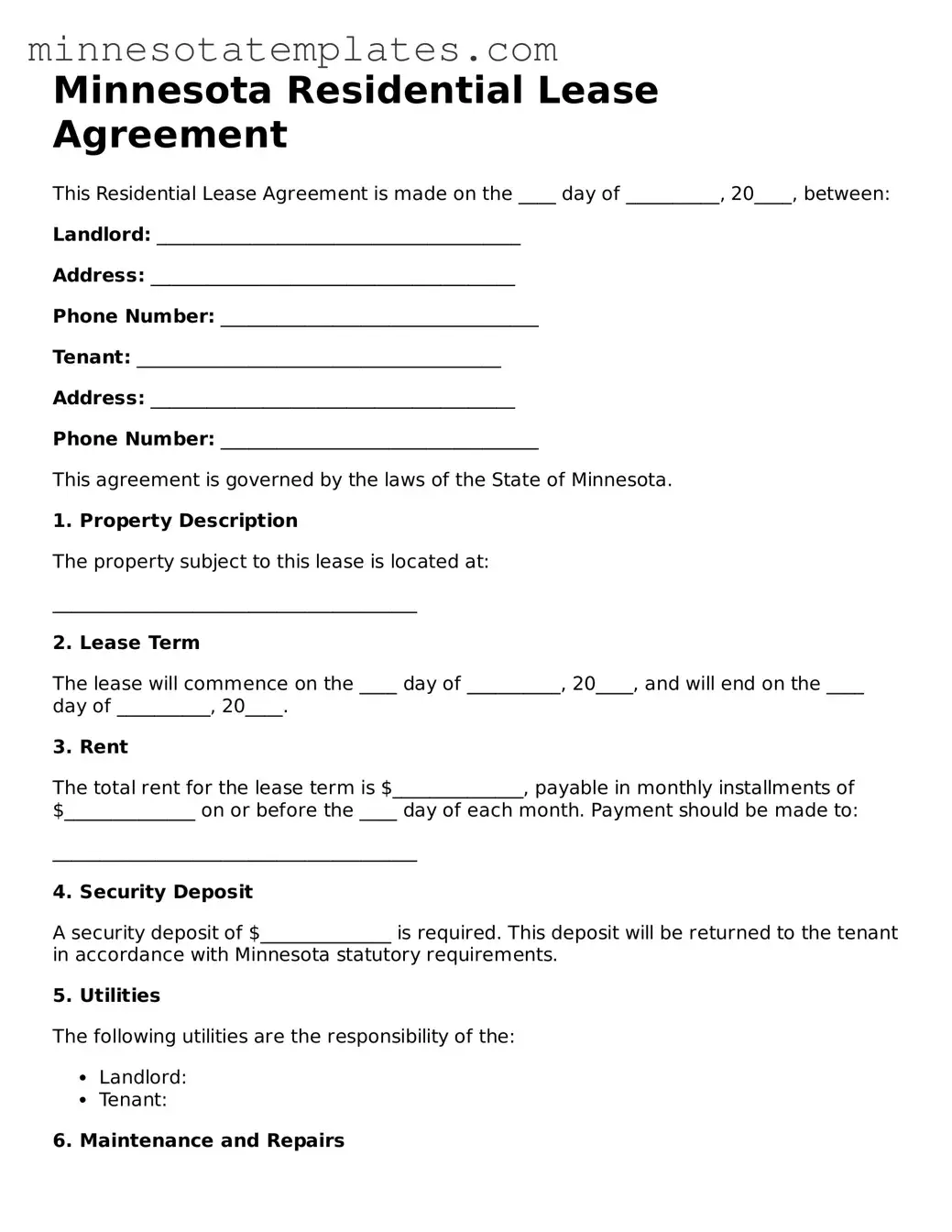The Minnesota Residential Lease Agreement form serves as a crucial document in the landlord-tenant relationship, outlining the terms and conditions that govern the rental of residential property. This form typically includes essential details such as the names of the parties involved, the property address, and the duration of the lease. Rent amount, payment due dates, and acceptable payment methods are clearly specified, ensuring both parties understand their financial obligations. Additionally, the agreement addresses security deposits, maintenance responsibilities, and rules regarding pets, providing clarity on what is expected from both the landlord and tenant. Important clauses related to termination and renewal of the lease further protect the interests of both parties. By establishing clear guidelines, this document helps prevent disputes and fosters a positive rental experience for everyone involved.
